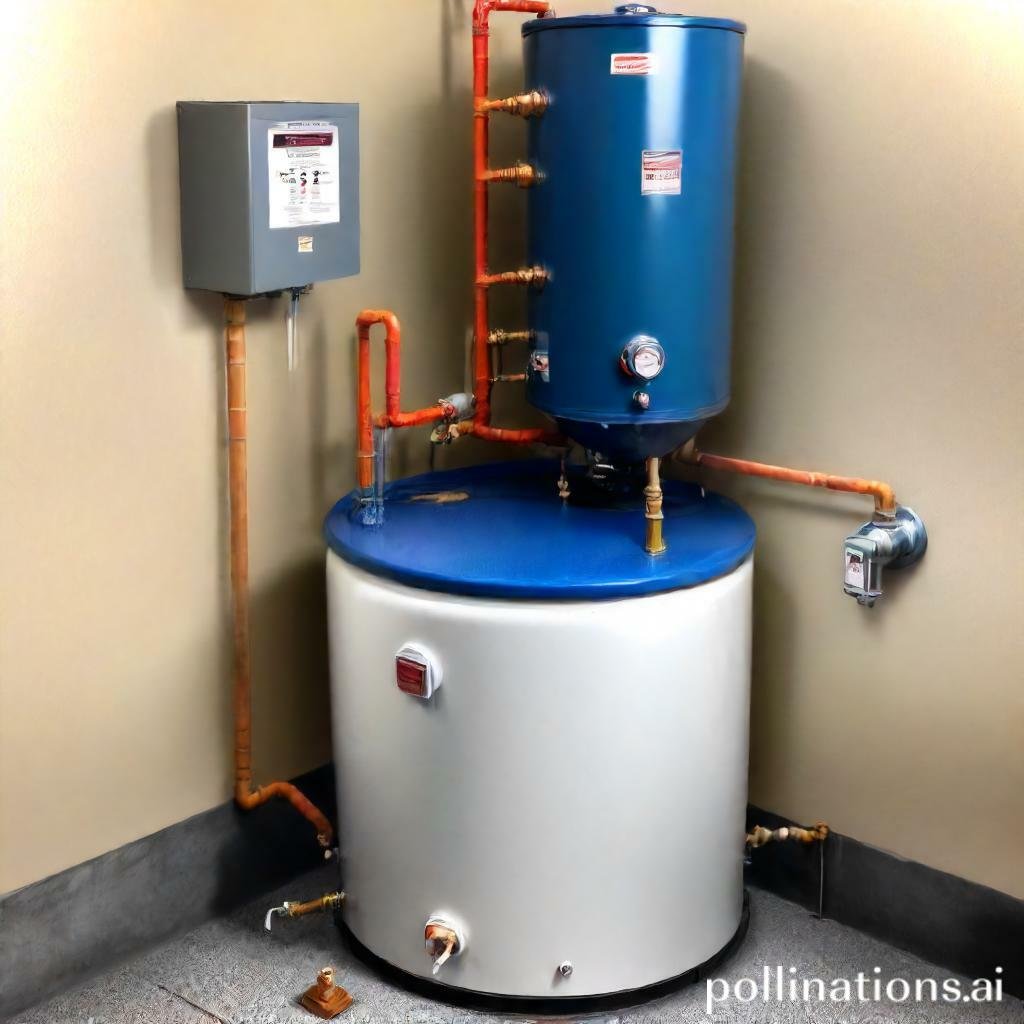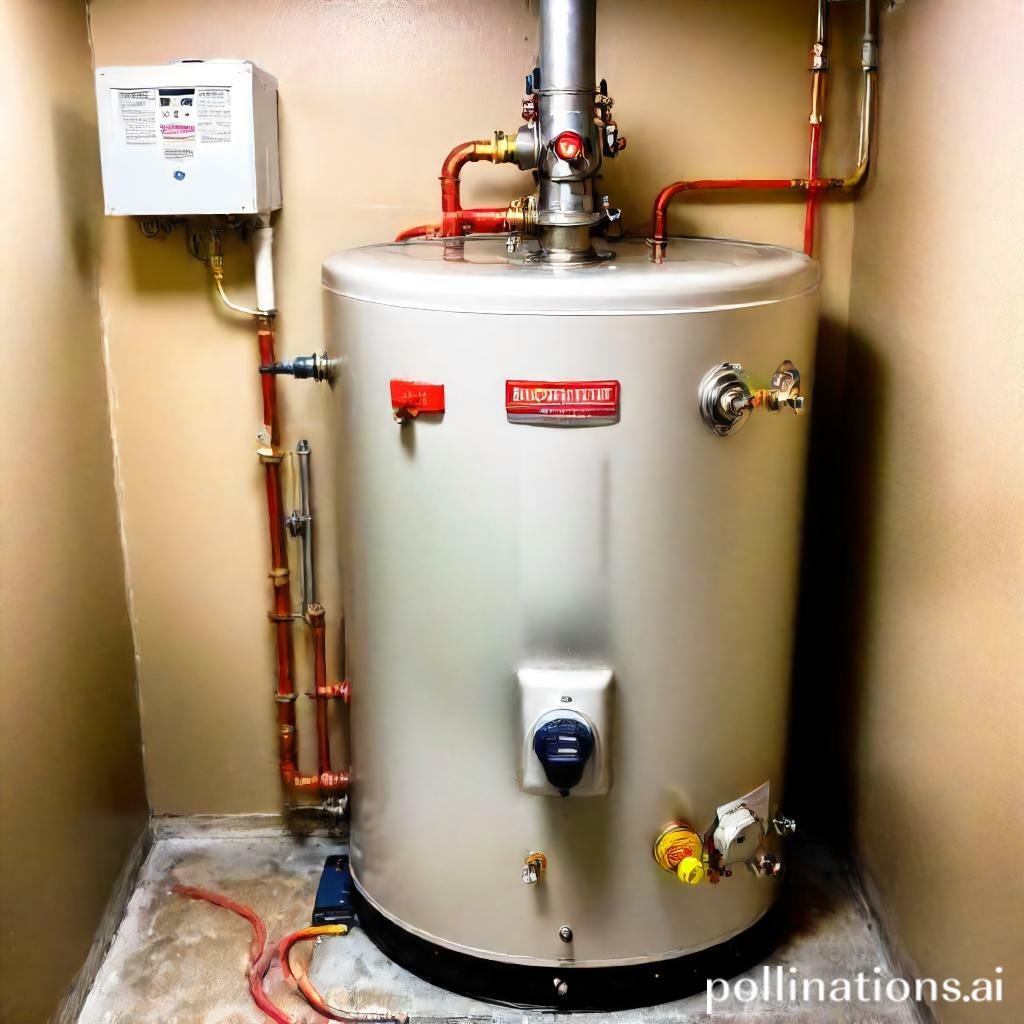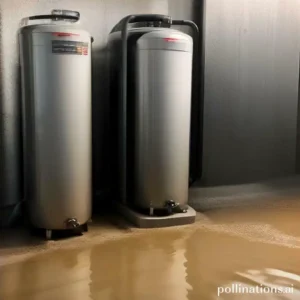
II. A sediment removal and water heater recirculation system can effectively remove sediment and improve the overall performance and lifespan of the water heater.
III. Regular maintenance and cleaning of the sediment removal and water heater recirculation system is necessary to ensure its continued effectiveness and prevent any potential issues.
Sediment removal and water heater recirculation system is a vital component in maintaining the efficiency and longevity of your water heating system. By effectively removing sediment buildup, this system ensures optimal performance and reduces the risk of damage to your water heater.
Additionally, the recirculation feature enhances convenience by providing hot water instantly, eliminating the need to wait for it to heat up. With our sediment removal and water heater recirculation system, you can enjoy a reliable and efficient water heating experience.
Discerning Sediment Buildup in Water Heaters
1. What causes sediment buildup in water heaters?
Sediment buildup in water heaters occurs due to the presence of minerals and impurities in the water supply. When water is heated, these minerals settle at the bottom of the tank, forming a layer of sediment. The main culprits for sediment buildup are calcium, magnesium, and other minerals commonly found in tap water.
This sediment can also come from the corrosion of the water heater’s internal components, such as the anode rod or the tank itself.
2. How does sediment affect the performance of water heaters?
Sediment buildup can have several negative effects on the performance of water heaters. First and foremost, it reduces the efficiency of the heating element. The layer of sediment acts as insulation, making it harder for the heat to transfer to the water. As a result, the water heater needs to work harder and consumes more energy to heat the same amount of water.
Additionally, sediment can lead to reduced water flow and pressure. The buildup of minerals can clog pipes and valves, restricting the flow of water through the system. This can cause issues such as low water pressure in showers and faucets.
3. Signs of sediment buildup in water heaters
There are several signs that indicate the presence of sediment buildup in water heaters:
- Unusual noises: If you hear popping, cracking, or rumbling sounds coming from your water heater, it could be a sign of sediment buildup. The noise is caused by the water trying to bubble through the layer of sediment.
- Reduced hot water supply: Sediment buildup takes up space in the tank, leaving less room for hot water. If you notice a decrease in the amount of hot water available or if it takes longer to heat up, sediment could be the culprit.
- Inefficient heating: Sediment acts as insulation, making it harder for the heating element to transfer heat to the water. If your water heater is struggling to reach the desired temperature or if it takes longer to heat up, sediment buildup may be the cause.
To prevent sediment buildup and maintain the efficiency of your water heater, regular maintenance is essential. Flushing the tank periodically to remove the sediment can prolong the lifespan of the appliance and ensure optimal performance.
Sediment Removal Methods
Removing sediment from your water heater is essential to maintain its efficiency and prolong its lifespan. Here are several effective methods for sediment removal:
1. Flushing the water heater tank
Regularly flushing your water heater tank is the first step in preventing sediment buildup. This process involves draining the tank to remove any accumulated sediment. To flush the tank, follow these steps:
- Turn off the power supply or gas valve to the water heater.
- Attach a hose to the drain valve located at the bottom of the tank.
- Place the other end of the hose in a suitable drainage area or a bucket.
- Open the drain valve and allow the water to flow until it runs clear.
- Close the drain valve and remove the hose.
- Turn on the power supply or gas valve to the water heater.
2. Using a descaling solution
If flushing alone doesn’t fully remove the sediment, you can use a descaling solution to dissolve and remove stubborn deposits. Here’s how to use a descaling solution:
- Turn off the power supply or gas valve to the water heater.
- Close the cold water supply valve to the water heater.
- Attach a hose to the drain valve and place the other end in a suitable drainage area or a bucket.
- Open a hot water faucet in your house to relieve pressure.
- Pour the descaling solution into the tank through the cold water inlet.
- Let the solution sit in the tank for the recommended amount of time, as specified by the manufacturer.
- Open the drain valve and allow the solution to drain completely.
- Close the drain valve, remove the hose, and open the cold water supply valve.
- Turn on the power supply or gas valve to the water heater.
3. Installing a sediment filter
Installing a sediment filter in your water supply line can help trap and prevent sediment from reaching your water heater. This filter is typically placed before the water enters the heater and requires regular maintenance to ensure its effectiveness.
4. Hiring a professional plumber for sediment removal
If you’re unsure about performing sediment removal yourself or if the sediment buildup is severe, it’s best to hire a professional plumber. They have the expertise and specialized equipment to effectively remove sediment and restore your water heater’s performance.
Water Heater Recirculation System
A water heater recirculation system is a plumbing setup that circulates hot water from the water heater to various fixtures throughout a building, ensuring that hot water is instantly available when needed.
1. What is a water heater recirculation system?
A water heater recirculation system is designed to eliminate the wait time for hot water by continuously circulating it through the pipes. It typically consists of a pump, a dedicated return line, and a check valve.
2. Benefits of installing a recirculation system
Installing a water heater recirculation system offers several benefits:
- Instant hot water: With a recirculation system, you no longer have to wait for hot water to reach the faucet or shower. It provides immediate access to hot water, saving you time and increasing convenience.
- Water conservation: By eliminating the need to run the tap until hot water arrives, a recirculation system helps conserve water. This is especially important in areas where water scarcity is a concern.
- Energy efficiency: By reducing the wait time for hot water, a recirculation system minimizes the energy wasted in heating and reheating water. This can lead to significant energy savings over time.
- Savings: During the initial installation cost may be higher, the long-term savings in water and energy bills make a recirculation system a cost-effective investment.
3. Types of recirculation systems
There are different types of water heater recirculation systems available:
- Traditional recirculation system: This system uses a dedicated return line to circulate hot water. It is commonly installed in new constructions or during major plumbing renovations.
- On-demand recirculation system: Also known as demand-controlled recirculation systems, these systems use temperature sensors or timers to activate the recirculation pump only when hot water is needed.
- Gravity-based recirculation system: In this system, hot water naturally rises and cold water sinks, creating a natural circulation loop. It is a simpler and more cost-effective option but may result in slightly longer wait times.
4. Installation and maintenance of recirculation systems
Installing and maintaining a water heater recirculation system requires professional expertise. It involves proper placement of the pump, check valve, and return line, as well as electrical connections. Regular maintenance, including flushing the system and checking for any leaks or malfunctions, is essential to ensure optimal performance.
Sediment removal and water heater recirculation system
In addition to providing instant hot water, a recirculation system also helps in sediment removal. The continuous circulation of water prevents sediment buildup in the pipes, ensuring better water quality and prolonging the lifespan of the water heater.

Combining Sediment Removal and Recirculation Systems
In this section, we will ponder the advantages of combining sediment removal and recirculation systems, how these systems work together, and the installation and maintenance considerations for combined systems.
Advantages of Combining Sediment Removal and Recirculation Systems
Additionally, combining these systems can elevate the overall water quality in your home. Sediment removal systems remove impurities, such as dirt and debris, ensuring cleaner water for everyday use. The recirculation system, notwithstanding, promotes the circulation of hot water, eliminating the need for wasteful water running at the same time waiting for hot water to reach the desired faucet. This not only saves water but also reduces energy consumption.
How Sediment Removal and Recirculation Systems Work Together
The sediment removal system operates by trapping sediment particles and preventing them from entering the water heater. This is typically achieved through a filtration mechanism that captures debris and sediment. The recirculation system, nonetheless, ensures a constant flow of hot water throughout the plumbing system.
When these systems are combined, the sediment removal system acts as a pre-filter for the recirculation system. It removes sediment and impurities, preventing any potential clogging or damage to the recirculation system. This ensures a continuous supply of clean and hot water throughout your home.
Installation and Maintenance Considerations for Combined Systems
When installing a combined sediment removal and recirculation system, it is crucial to follow the manufacturer’s guidelines and consult a professional if needed. Proper installation ensures optimal performance and prevents any potential issues.
Regular maintenance is also essential for these systems. This includes periodic cleaning and replacement of sediment filters, as well as checking the recirculation system for any leaks or malfunctions. By upholding the recommended maintenance schedule, you can ensure the longevity and efficiency of your combined system.
| Advantages | How It Works | Considerations |
|---|---|---|
| Efficiency and longevity of water heater | Sediment removal and pre-filtering for recirculation system | Proper installation and regular maintenance |
| Enhanced water quality | Removal of impurities and constant hot water circulation | Follow manufacturer’s guidelines and periodic cleaning |

Choosing the Right Sediment Removal and Recirculation System for Your Needs
Factors to Consider When Selecting a Sediment Removal System
In regard to choosing a sediment removal system, there are several key factors to consider. First and foremost, you need to assess the level of sediment buildup in your environment. Are you dealing with heavy sedimentation or just a moderate amount?
Next, consider the size of your operation. Is it a small-scale setup or a large industrial facility? The sediment removal system you choose should be able to handle the volume of sediment in your specific environment.
Another important factor is the type of sediment you are dealing with. Is it fine particles or larger debris? Different systems are designed to handle different types of sediment, so it’s crucial to choose one that is suitable for your particular situation.
As a final point, take into account the maintenance requirements of the sediment removal system. How often will it need to be cleaned or serviced? Opt for a system that is easy to maintain and doesn’t require frequent downtime.
Factors to Consider When Selecting a Recirculation System
A recirculation system is essential for maintaining the quality and freshness of your ice cream. When choosing a recirculation system, there are a few key factors to keep in mind.
First and foremost, consider the capacity of the system. It should be able to handle the volume of ice cream you produce on a daily basis. If you have a high-demand shop, you’ll need a system that can handle a larger output.
Next, think about the energy efficiency of the system. Look for a recirculation system that is designed to minimize energy consumption at the same time still maintaining optimal performance.
Another factor to consider is the ease of use and maintenance. A recirculation system that is user-friendly and easy to clean will save you time and effort in the long run.
Choosing the Best System for Your Specific Needs and Budget
Once you have considered the factors for both sediment removal and recirculation systems, it’s time to choose the best system for your needs and budget.
Start by determining your budget. How much are you willing to invest in these systems? This will help narrow down your options and ensure you stay within your financial limits.
Next, prioritize your needs. What is more important to you – a highly efficient sediment removal system or a state-of-the-art recirculation system? Consider the specific requirements of your ice cream shop and make a decision based on what will benefit you the most.
Finally, do your research and compare different systems on the market. Look for customer reviews and ratings to get a better absorbing of each system’s performance and reliability.
Bottom Line
Overall, sediment buildup in water heaters can cause a variety of issues, including decreased efficiency and shortened lifespan. Implementing a sediment removal and water heater recirculation system can help prevent these problems and ensure that your water heater operates at peak performance for years to come.
Whilst the initial cost of installation may be a concern for some, the long-term benefits of improved efficiency and reduced maintenance costs make it a worthwhile investment. Additionally, regular maintenance and monitoring of the system can help ensure that it continues to function properly and provide optimal results.
Read More:
1. Sediment Impact On Water Heater Tank Corrosion
2. Sediment Removal Frequency For Gas Water Heaters










